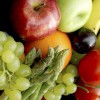 Fructose is a simple sugar found in many foods. Common table sugar is made of equal amounts fructose and glucose. Similarly, high-fructose corn syrup, commonly used to sweeten foods, contains a mixture of fructose and glucose. Fructose is sweeter than glucose, and for this reason it has been used in many sweetened foods. This 2-page fact sheet was written by Wendy Dahl, Lauren Foster, and Russel Owen, and published by the UF Department of Food Science and Human Nutrition, June 2013.
Fructose is a simple sugar found in many foods. Common table sugar is made of equal amounts fructose and glucose. Similarly, high-fructose corn syrup, commonly used to sweeten foods, contains a mixture of fructose and glucose. Fructose is sweeter than glucose, and for this reason it has been used in many sweetened foods. This 2-page fact sheet was written by Wendy Dahl, Lauren Foster, and Russel Owen, and published by the UF Department of Food Science and Human Nutrition, June 2013.
http://edis.ifas.ufl.edu/fs148
Tag: Food Science and Human Nutrition Department
Facts about Phosphorus
 Phosphorus is a mineral found in every cell of the body, usually in the form of phosphate. It is the second most abundant mineral in the body after calcium. About 85% of phosphorus is stored in the bones and teeth. It is important for forming bones and teeth, as well as repairing bones. This 3-page fact sheet was written by Nancy J. Gal and Wendy J. Dahl, and published by the UF Department of Food Science and Human Nutrition, January 2014.
Phosphorus is a mineral found in every cell of the body, usually in the form of phosphate. It is the second most abundant mineral in the body after calcium. About 85% of phosphorus is stored in the bones and teeth. It is important for forming bones and teeth, as well as repairing bones. This 3-page fact sheet was written by Nancy J. Gal and Wendy J. Dahl, and published by the UF Department of Food Science and Human Nutrition, January 2014.
http://edis.ifas.ufl.edu/fs237
Outbreaks of Foodborne Illness Associated with Common Berries, 1983 through May 2013
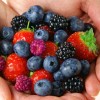 This 9-page fact sheet serves as a reference for anyone concerned about the safety of fresh and frozen berry products. Providing information for those who grow, harvest, process, transport, and serve berries to consumers is important for improving science-based food safety programs for the entire supply chain. Table 1 lists the reported outbreaks of foodborne illness from 1983 through May 2013 in which specific berries and mixed berries have been identified as the food vehicle. Table 2 lists the reported outbreaks in which berries were likely the food vehicle.
This 9-page fact sheet serves as a reference for anyone concerned about the safety of fresh and frozen berry products. Providing information for those who grow, harvest, process, transport, and serve berries to consumers is important for improving science-based food safety programs for the entire supply chain. Table 1 lists the reported outbreaks of foodborne illness from 1983 through May 2013 in which specific berries and mixed berries have been identified as the food vehicle. Table 2 lists the reported outbreaks in which berries were likely the food vehicle.
Written by M. Palumbo, L. J. Harris, and M. D. Danyluk, and published by the UF Department of Food Science and Human Nutrition, November 2013.
http://edis.ifas.ufl.edu/fs232
Shopping for Health: Foods with Added Fiber
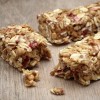 Fiber in foods consists of carbohydrates that cannot be digested. Although many foods naturally contain fiber, high-fiber ingredients are commonly added to foods to increase their fiber content. Fiber ingredients may be added to foods for health or functional reasons. This 3-page fact sheet was written by Wendy Dahl, and published by the UF Department of Food Science and Human Nutrition, November 2013.
Fiber in foods consists of carbohydrates that cannot be digested. Although many foods naturally contain fiber, high-fiber ingredients are commonly added to foods to increase their fiber content. Fiber ingredients may be added to foods for health or functional reasons. This 3-page fact sheet was written by Wendy Dahl, and published by the UF Department of Food Science and Human Nutrition, November 2013.
http://edis.ifas.ufl.edu/fs235
Preventing Foodborne Illness: E. coli O157:H7
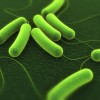 Escherichia coli is a bacterium found in the digestive system of healthy humans and animals and transmitted through fecal contamination. There are hundreds of known E. coli strains, with E. coli O157:H7 being the most recognized. This enterohemorrhagic E. coli (or EHEC) strain is responsible for an estimated 63,153 cases of infection and 20 deaths in the United States annually, and causes approximately $255 million in losses each year. E. coli are found everywhere in the environment but mostly occupy animal surfaces and digestive systems, making it important to thoroughly wash anything that comes into contact with these surfaces. This 5-page fact sheet was written by Keith R. Schneider, Renée Goodrich Schneider, Michael A. Hubbard, and Alexandra Chang, and published by the UF Department of Food Science and Human Nutrition, October 2013.
Escherichia coli is a bacterium found in the digestive system of healthy humans and animals and transmitted through fecal contamination. There are hundreds of known E. coli strains, with E. coli O157:H7 being the most recognized. This enterohemorrhagic E. coli (or EHEC) strain is responsible for an estimated 63,153 cases of infection and 20 deaths in the United States annually, and causes approximately $255 million in losses each year. E. coli are found everywhere in the environment but mostly occupy animal surfaces and digestive systems, making it important to thoroughly wash anything that comes into contact with these surfaces. This 5-page fact sheet was written by Keith R. Schneider, Renée Goodrich Schneider, Michael A. Hubbard, and Alexandra Chang, and published by the UF Department of Food Science and Human Nutrition, October 2013.
http://edis.ifas.ufl.edu/fs097
Preventing Foodborne Illness: E. coli “The Big Six”
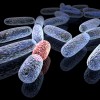 Escherichia coli is a bacterium usually found in the digestive system of healthy humans and animals and transmitted through fecal contamination. There are hundreds of known E. coli strains, with E. coli O157:H7 being the most widely recognized because of the severe illness it causes. In addition to E. coli O157:H7, the U.S. Food and Drug Administration has identified six serogroups (or “strains”), known as the “big six,” which includes E. coli O26, O45, O103, O111, O121, and O145. These are the most commonly seen types of E. coli found in food in the United States that are not O157:H7, and they cause approximately 37,000 cases per year in the United States. This 5-page fact sheet was written by Susanna Richardson, Renée Goodrich Schneider, and Keith R. Schneider, and published by the UF Department of Food Science and Human Nutrition, October 2013.
Escherichia coli is a bacterium usually found in the digestive system of healthy humans and animals and transmitted through fecal contamination. There are hundreds of known E. coli strains, with E. coli O157:H7 being the most widely recognized because of the severe illness it causes. In addition to E. coli O157:H7, the U.S. Food and Drug Administration has identified six serogroups (or “strains”), known as the “big six,” which includes E. coli O26, O45, O103, O111, O121, and O145. These are the most commonly seen types of E. coli found in food in the United States that are not O157:H7, and they cause approximately 37,000 cases per year in the United States. This 5-page fact sheet was written by Susanna Richardson, Renée Goodrich Schneider, and Keith R. Schneider, and published by the UF Department of Food Science and Human Nutrition, October 2013.
http://edis.ifas.ufl.edu/fs233
Establishing Lot Size through Sanitation Clean Breaks in Produce Packing Facilities
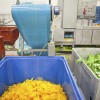 A clean break is needed between groups of products for food protection regulators to consider produce as separate from other produce packed off the same line. Determining a clean break is important to limit the scope of a recall. Packers can determine lot size based on what is practical and the amount of risk that their business is comfortable with. Food protection regulators define lot size as when a clean break occurs before and after a group of products. For instance, if a packer chooses to have a daily documented and verified clean break, the packer would establish one lot per day, as defined by food protection regulators. In other situations, a packer may choose to have a clean break conducted weekly, meaning that a food safety incident could result in a week’s worth of production being recalled. This 2-page fact sheet was written by B. Chapman and M.D. Danyluk, and published by the UF Department of Food Science and Human Nutrition, August 2013.
A clean break is needed between groups of products for food protection regulators to consider produce as separate from other produce packed off the same line. Determining a clean break is important to limit the scope of a recall. Packers can determine lot size based on what is practical and the amount of risk that their business is comfortable with. Food protection regulators define lot size as when a clean break occurs before and after a group of products. For instance, if a packer chooses to have a daily documented and verified clean break, the packer would establish one lot per day, as defined by food protection regulators. In other situations, a packer may choose to have a clean break conducted weekly, meaning that a food safety incident could result in a week’s worth of production being recalled. This 2-page fact sheet was written by B. Chapman and M.D. Danyluk, and published by the UF Department of Food Science and Human Nutrition, August 2013.
http://edis.ifas.ufl.edu/fs234
The Food Safety Modernization Act and the FDA Facility Registration Program
 The Food Safety Modernization Act that President Obama signed into law January 4, 2011 represents the most sweeping update to food safety regulation since the Federal Food, Drug, and Cosmetic Act of 1938. As part of FSMA, registration is required of facilities that manufacture, process, pack or hold food for human or animal consumption. This 3-page fact sheet was written by Susanna Richardson, Renée Goodrich Schneider, Mark A. Ritenour, Michelle D. Danyluk, and Keith R. Schneider, and published by the UF Department of Food Science and Human Nutrition, July 2013.
The Food Safety Modernization Act that President Obama signed into law January 4, 2011 represents the most sweeping update to food safety regulation since the Federal Food, Drug, and Cosmetic Act of 1938. As part of FSMA, registration is required of facilities that manufacture, process, pack or hold food for human or animal consumption. This 3-page fact sheet was written by Susanna Richardson, Renée Goodrich Schneider, Mark A. Ritenour, Michelle D. Danyluk, and Keith R. Schneider, and published by the UF Department of Food Science and Human Nutrition, July 2013.
http://edis.ifas.ufl.edu/fs231
Beans, Peas, and Lentils: Health Benefits (FSHN1306/FS229)
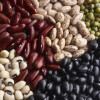 Bean, peas, and lentils are known collectively as legumes or pulses. Beans are great sources of many nutrients, including protein, fiber, and potassium. They can be placed either in the vegetable group or the protein group of MyPlate. If you have consumed enough protein choices, then you can count them in the vegetable group, and vice versa. This 2-page fact sheet was written by Lakshmi Mahan, Lauren Foster, and Wendy J. Dahl, and published by the UF Department of Food Science and Human Nutrition, May 2013.
Bean, peas, and lentils are known collectively as legumes or pulses. Beans are great sources of many nutrients, including protein, fiber, and potassium. They can be placed either in the vegetable group or the protein group of MyPlate. If you have consumed enough protein choices, then you can count them in the vegetable group, and vice versa. This 2-page fact sheet was written by Lakshmi Mahan, Lauren Foster, and Wendy J. Dahl, and published by the UF Department of Food Science and Human Nutrition, May 2013.
http://edis.ifas.ufl.edu/fs229
El sobrepeso y el mantenimiento de la perdida de peso (FSHN1304S/FS228)
 Para muchas personas, la pérdida de peso es una batalla crónica. Las dietas populares a menudo son poco exitosas porque no se pueden seguir de forma permanente. No hay una dieta mágica que le pueda hacer bajar de peso inmediatamente, pero a continuación se enumeran algunos buenos consejos para la pérdida de peso de una manera estable y de largo plazo. This 3-page fact sheet was written by Anne Mathews, Lauren Foster, and Wendy Dahl, and published by the UF Department of Food Science and Human Nutrition, April 2013.
Para muchas personas, la pérdida de peso es una batalla crónica. Las dietas populares a menudo son poco exitosas porque no se pueden seguir de forma permanente. No hay una dieta mágica que le pueda hacer bajar de peso inmediatamente, pero a continuación se enumeran algunos buenos consejos para la pérdida de peso de una manera estable y de largo plazo. This 3-page fact sheet was written by Anne Mathews, Lauren Foster, and Wendy Dahl, and published by the UF Department of Food Science and Human Nutrition, April 2013.
http://edis.ifas.ufl.edu/fs228
De compras para la salud: Vegetales (FSHN1305/FS227)
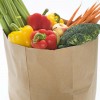 Escoger los vegetales correctos le ayudará a obtener los nutrientes que su cuerpo necesita cada día. Con tantas opciones, ir a comprar vegetales puede parecer una tarea difícil, pero no lo tiene que ser. Este artículo le ayudará a volverse un comprador inteligente de vegetales. This 3-page fact sheet was written by Ashley R. Kendall y Wendy Dahl, and published by the UF Department of Food Science and Human Nutrition, April 2013.
Escoger los vegetales correctos le ayudará a obtener los nutrientes que su cuerpo necesita cada día. Con tantas opciones, ir a comprar vegetales puede parecer una tarea difícil, pero no lo tiene que ser. Este artículo le ayudará a volverse un comprador inteligente de vegetales. This 3-page fact sheet was written by Ashley R. Kendall y Wendy Dahl, and published by the UF Department of Food Science and Human Nutrition, April 2013.
http://edis.ifas.ufl.edu/fs227
MiPlato para los problemas de deglucion: Disfagia (FSHN1214S/FS223)
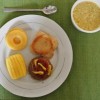 MiPlato es el ícono de los lineamientos alimentarios del Departamento de Agricultura de los Estados Unidos basado en las Guías Alimentarias del 2010 para los Estadounidenses. Es una imagen fácil de entender que se enfoca en la creación de un plato con alimentos saludables. Los recursos y herramientas en ChooseMyPlate.gov ofrece información clara y factible acerca de cómo escoger mejor alimentos que se pueden adaptar a personas con dificultades de deglución (disfagia) que requieren de alimentos con textura modificada. Aunque los alimentos magros y los alimentos bajos en grasa son recomendados, aquellos con dificultades de deglución pueden necesitar añadir la grasa a algunos alimentos para mejorar la aceptabilidad, la facilidad de deglución y también para ayudarlos a satisfacer sus necesidades de energía. This 3-page fact sheet was written by Jamila R. Lepore, Nancy J. Gal, and Wendy Dahl, and published by the UF Department of Food Science and Human Nutrition, April 2013.
MiPlato es el ícono de los lineamientos alimentarios del Departamento de Agricultura de los Estados Unidos basado en las Guías Alimentarias del 2010 para los Estadounidenses. Es una imagen fácil de entender que se enfoca en la creación de un plato con alimentos saludables. Los recursos y herramientas en ChooseMyPlate.gov ofrece información clara y factible acerca de cómo escoger mejor alimentos que se pueden adaptar a personas con dificultades de deglución (disfagia) que requieren de alimentos con textura modificada. Aunque los alimentos magros y los alimentos bajos en grasa son recomendados, aquellos con dificultades de deglución pueden necesitar añadir la grasa a algunos alimentos para mejorar la aceptabilidad, la facilidad de deglución y también para ayudarlos a satisfacer sus necesidades de energía. This 3-page fact sheet was written by Jamila R. Lepore, Nancy J. Gal, and Wendy Dahl, and published by the UF Department of Food Science and Human Nutrition, April 2013.
http://edis.ifas.ufl.edu/fs223
Overweight and Weight Loss Maintenance (FSHN1304/FS226)
 For many people, weight loss is a chronic battle. Popular diets are often unsuccessful because they cannot be followed permanently. There is no magic diet to make you instantly shed pounds, but some good tips for steady, long-term weight loss are listed in this 2-page fact sheet written by Anne Mathews, Lauren Foster, and Wendy Dahl, and published by the UF Department of Food Science and Human Nutrition, February 2013.
For many people, weight loss is a chronic battle. Popular diets are often unsuccessful because they cannot be followed permanently. There is no magic diet to make you instantly shed pounds, but some good tips for steady, long-term weight loss are listed in this 2-page fact sheet written by Anne Mathews, Lauren Foster, and Wendy Dahl, and published by the UF Department of Food Science and Human Nutrition, February 2013.
http://edis.ifas.ufl.edu/fs226
Shopping for Health: Herbs and Spices (FSHN1303/FS225)
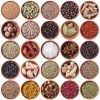 Herbs and spices have been used for hundreds of years in cooking and medicine. They add a wide range of flavors to food and may also provide health benefits. For some people, using herbs and spices in cooking may be a challenge, but it doesn’t have to be that way! The information below will get you on track to enjoying zesty, flavorful, healthy cooking.This 4-page fact sheet was written by Jenna A. Norris and Wendy Dahl, and published by the UF Department of Food Science and Human Nutrition, April 2013.
Herbs and spices have been used for hundreds of years in cooking and medicine. They add a wide range of flavors to food and may also provide health benefits. For some people, using herbs and spices in cooking may be a challenge, but it doesn’t have to be that way! The information below will get you on track to enjoying zesty, flavorful, healthy cooking.This 4-page fact sheet was written by Jenna A. Norris and Wendy Dahl, and published by the UF Department of Food Science and Human Nutrition, April 2013.
http://edis.ifas.ufl.edu/fs225
Shopping for Health: A Menu for One (FSHN1302/FS224)
 In today’s busy world, many Americans find themselves cooking meals for one. Older adults and college students alike face the challenge of making meal preparation a priority when no one else is depending on them to create a balanced meal. Whether you pop a dish into the microwave after a busy day or spend time cooking a special meal for yourself, shopping for and preparing healthy, low-cost meals for one can be easy and enjoyable with just a little bit of planning. This 4-page fact sheet was written by Morgan Denhard and Wendy Dahl, and published by the UF Department of Food Science and Human Nutrition, February 2013.
In today’s busy world, many Americans find themselves cooking meals for one. Older adults and college students alike face the challenge of making meal preparation a priority when no one else is depending on them to create a balanced meal. Whether you pop a dish into the microwave after a busy day or spend time cooking a special meal for yourself, shopping for and preparing healthy, low-cost meals for one can be easy and enjoyable with just a little bit of planning. This 4-page fact sheet was written by Morgan Denhard and Wendy Dahl, and published by the UF Department of Food Science and Human Nutrition, February 2013.
http://edis.ifas.ufl.edu/fs224
Guia de merendar saludablemente para el adulto mayor fragil (FSHN1219S/FS222)
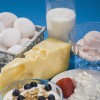 El tomar decisiones inteligentes para la selección de las meriendas ayuda a asegurar que los adultos mayores frágiles satisfagan sus necesidades nutricionales. Estas son algunas meriendas sencillas y nutritivas que son apropiadas para los adultos mayores frágiles. This 3-page fact sheet was written by Paula G. Harris-Swiatko y Wendy J. Dahl, and published by the UF Department of Food Science and Human Nutrition, April 2013.
El tomar decisiones inteligentes para la selección de las meriendas ayuda a asegurar que los adultos mayores frágiles satisfagan sus necesidades nutricionales. Estas son algunas meriendas sencillas y nutritivas que son apropiadas para los adultos mayores frágiles. This 3-page fact sheet was written by Paula G. Harris-Swiatko y Wendy J. Dahl, and published by the UF Department of Food Science and Human Nutrition, April 2013.
http://edis.ifas.ufl.edu/fs222
Preventing Foodborne Illness: Salmonellosis (FSHN0214/FS096)
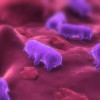 In 2007, there were over 1 million cases and some 400 deaths associated with Salmonella-contaminated food. In 2004, it was estimated that the total economic burden caused by Salmonella infection in the United States was $1.6–$5.3 billion. Food handlers, processors, and retailers can minimize the risk of salmonellosis by using good food handling practices. This 6-page fact sheet was written by Keith R. Schneider, Renée Goodrich Schneider, Michael A. Hubbard, and Susanna Richardson, and published by the UF Department of Food Science and Human Nutrition, March 2013.
In 2007, there were over 1 million cases and some 400 deaths associated with Salmonella-contaminated food. In 2004, it was estimated that the total economic burden caused by Salmonella infection in the United States was $1.6–$5.3 billion. Food handlers, processors, and retailers can minimize the risk of salmonellosis by using good food handling practices. This 6-page fact sheet was written by Keith R. Schneider, Renée Goodrich Schneider, Michael A. Hubbard, and Susanna Richardson, and published by the UF Department of Food Science and Human Nutrition, March 2013.
http://edis.ifas.ufl.edu/fs096
Preventing Foodborne Illness: Listeriosis (FSHN036/FS102)
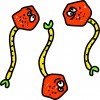 Listeriosis is one of several foodborne diseases that are often reported in the scientific and popular press. In the United States, it affects about 1,600 people every year, with about 270 of those cases resulting in death. It expresses itself in the affected person by means of septicemia, meningitis, and/or encephalitis. Pregnant women who have intrauterine or cervical infections caused by L. monocytogenes in their second or third trimesters may spontaneously abort the fetus or produce a stillbirth. Influenza-type symptoms, which may include continuous fever, usually precede the aforementioned disorders. This 4-page fact sheet was written by Keith R. Schneider, Renée Goodrich-Schneider, Michael A. Hubbard, and Susanna Richardson, and published by the UF Department of Food Science and Human Nutrition, March 2013.
Listeriosis is one of several foodborne diseases that are often reported in the scientific and popular press. In the United States, it affects about 1,600 people every year, with about 270 of those cases resulting in death. It expresses itself in the affected person by means of septicemia, meningitis, and/or encephalitis. Pregnant women who have intrauterine or cervical infections caused by L. monocytogenes in their second or third trimesters may spontaneously abort the fetus or produce a stillbirth. Influenza-type symptoms, which may include continuous fever, usually precede the aforementioned disorders. This 4-page fact sheet was written by Keith R. Schneider, Renée Goodrich-Schneider, Michael A. Hubbard, and Susanna Richardson, and published by the UF Department of Food Science and Human Nutrition, March 2013.
http://edis.ifas.ufl.edu/fs102
Carbohydrate Counting: Meals for Diabetes (FSHN1218/FS212)
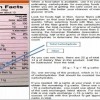 “Carb” counting is a way to plan meals to help you maintain target blood glucose levels. Certain foods contain carbohydrate, and these are the foods that most influence your blood glucose. Your body needs carbohydrate in just the right amount. Not enough carbohydrate can lead to low blood glucose (hypoglycemia). Too much carbohydrate can lead to high blood glucose (hyperglycemia). This is why carb counting is a great tool to understand and practice because it can help you control your blood glucose and still give you the freedom to make varied food choices. This 4-page fact sheet was written by Cassie Rowe, Jamila R. Lepore, and Wendy J. Dahl, and published by the UF Department of Food Science and Human Nutrition, March 2013.
“Carb” counting is a way to plan meals to help you maintain target blood glucose levels. Certain foods contain carbohydrate, and these are the foods that most influence your blood glucose. Your body needs carbohydrate in just the right amount. Not enough carbohydrate can lead to low blood glucose (hypoglycemia). Too much carbohydrate can lead to high blood glucose (hyperglycemia). This is why carb counting is a great tool to understand and practice because it can help you control your blood glucose and still give you the freedom to make varied food choices. This 4-page fact sheet was written by Cassie Rowe, Jamila R. Lepore, and Wendy J. Dahl, and published by the UF Department of Food Science and Human Nutrition, March 2013.
http://edis.ifas.ufl.edu/fs212
Pureed Foods: High Protein (FSHN1215/FS208)
 Protein is an important nutrient. Many older adults do not consume enough of this vital nutrient, crucial to overall health and well-being. For those with dysphagia and on a puréed diet, consuming sufficient protein is even more difficult. While a texture-modified diet may not be the diet of choice, the goal is to make it as appealing as possible so that the person consuming the purées can experience a better quality of life. This 4-page fact sheet was written by Jamila R. Lepore and Wendy J. Dahl, and published by the UF Department of Food Science and Human Nutrition, March 2013.
Protein is an important nutrient. Many older adults do not consume enough of this vital nutrient, crucial to overall health and well-being. For those with dysphagia and on a puréed diet, consuming sufficient protein is even more difficult. While a texture-modified diet may not be the diet of choice, the goal is to make it as appealing as possible so that the person consuming the purées can experience a better quality of life. This 4-page fact sheet was written by Jamila R. Lepore and Wendy J. Dahl, and published by the UF Department of Food Science and Human Nutrition, March 2013.
http://edis.ifas.ufl.edu/fs208